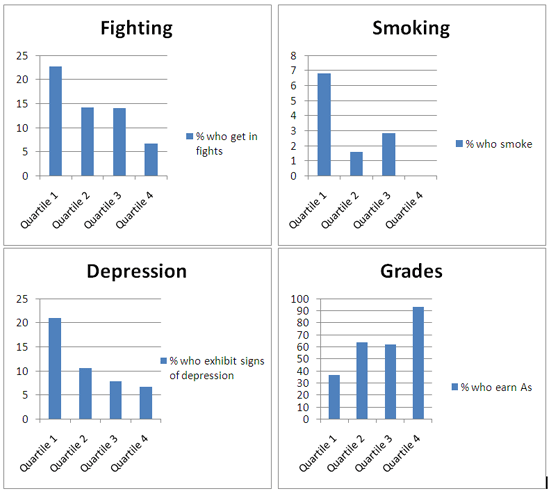Goal Orientation
Definition
Children’s motivation and ability to make viable plans and take action toward desired goals.
-
Motivation and ability to make viable plans
-
Taking action toward desired goals
Parent Scale
Please indicate how much these statements describe your child. (Not at all like my child, A little like my child, Somewhat like my child, A lot like my child, Exactly like my child)
-
My child develops step-by-step plans to reach his/her goals.
-
My child has goals in his/her life.
-
If my child sets goals, he/she takes action to reach them.
-
It is important to my child that he/she reaches his/her goals.
-
My child knows how to make his/her plans happen.
Please indicate how often this happens. (None of the time, A little of the time, Some of the time, Most of the time, All of the time)
-
How often does your child make plans to achieve his/her goals?
-
How often does your child have trouble figuring out how to make his/her goals happen?
Parent Scale Psychometric Properties and Fit Indices
We conducted confirmatory factor analysis (CFA) to examine whether responses to the scale appeared to measure a single construct. Along with Cronbach’s alpha, we present model fit indices below.

-
Alpha=0.93 (excellent)
-
CFI=0.996 (excellent)
-
TLI=0.996 (excellent)
-
RMSEA=0.081 (adequate)
Adolescent Scale
Please indicate how much these statements describe you. (Not at all like me, A little like me, Somewhat like me, A lot like me, Exactly like me)
-
I develop step-by-step plans to reach my goals.
-
I have goals in my life.
-
If I set goals, I take action to reach them.
-
It is important to me that I reach my goals.
-
I know how to make my plans happen.
Please indicate how often this happens (None of the time, A little of the time, Some of the time, Most of the time, All of the time)
-
How often do you make plans to achieve your goals?
-
How often do you have trouble figuring out how to make your goals happen?

-
Alpha=0.88 (excellent)
-
CFI=0.994 (excellent)
-
TLI=0.990 (excellent)
-
RMSEA=0.072 (adequate)
Subgroup Model Fit
We tested the final adolescent and parent models with subgroups to examine whether the model fit for different subsets of respondents in the same manner as the overall sample. Using the same fit statistic requirements as the overall models, a check mark indicates that the model fit for the subgroup. Due to relatively small sample sizes and sparse categorical responses, resulting in too many bivariate empty cells, we were not able to fit all of the models. The subgroups for which we were not able to fit a model are indicated with N/A. Household income is defined as “low” if it is less than the median income in the sample. “High” household income indicates that the household income was equal to or greater than the sample’s median.

Concurrent Validity
Four single item measures were used to examine the concurrent validity of the adolescent scale: a measure of social behavior (fighting), a measure of health behavior (smoking), a measure of emotional health (adolescent-reported depressive symptoms), and a measure of cognitive development (grades).
Concurrent validity was examined in two ways: with bivariate and multivariate analyses. The table below presents the results of multivariate analyses, which control for: teen gender, teen age, teen race, household income, household size, parental education, parental marital status, parental home ownership, parental employment, and metropolitan area and region of residence. The beta coefficient of the relationship between the construct’s scale and outcome is presented.

The graphs below show the bivariate relationships between the adolescent scale and outcomes. Results are presented for relationships that were at least moderately significant (at the 0.10 level) in the multivariate analyses. Note that the y axis scales are different in each graph.

© Copyright 2025 ChildTrendsPrivacy Statement
Newsletter SignupLinkedInYouTubeBlueskyInstagram